The Turbulent Close of the Middle Ages: War, Plague, Dissent, and Change
From The Professor's Desk
As the Middle English period neared its close, England stood on the threshold of profound transformation. The final centuries of the Middle Ages were marked by a convergence of historical forces that reshaped the nation’s political, social, and cultural identity. The long and bitter Hundred Years’ War with France drained resources and fostered a nascent sense of national consciousness. The catastrophic arrival of the Black Death decimated the population, accelerating the decline of feudalism and altering the very fabric of rural and urban life. The Peasants’ Revolt signalled growing unrest among the lower orders, while the reformist teachings of John Wycliffe and the Lollard Movement challenged the authority of the Church and sowed early seeds of dissent.
At the same time, English began to assert itself in new domains: it was adopted in the legal courts and government, replacing the centuries-long dominance of French and Latin. The ensuing War of the Roses plunged the realm into dynastic conflict, setting the stage for the Tudor consolidation of power. These were years of turbulence and transition — the so-called “baron years” between the end of the great medieval poets and the dawn of the English Renaissance.
This chapter offers an essential perspective on the forces that shaped England’s entry into the modern world. To understand the Renaissance, one must first grasp the deep transformations of these final medieval years — years marked by suffering, rebellion, reform, and the gradual forging of a new national and linguistic identity.

Events and Historical Changes
The Beginning of the Hundred Years’ War with France: The Hundred Years’ War (1337-1453) was a series of conflicts between the Kingdom of England and the Kingdom of France. It was marked by significant battles, including those at Crécy and Agincourt. The war had complex causes, including territorial disputes and claims to the French throne.
The Peasants’ Revolt and the Decline of the Feudal System: The Peasants’ Revolt of 1381 was a major uprising in England driven by social and economic grievances. Peasants protested against oppressive taxation, serfdom, and other feudal practices. While the revolt was eventually suppressed, it highlighted the growing discontent with the feudal system and contributed to its decline.
The Black Death: The Black Death, a devastating pandemic caused by the bubonic plague, swept through Europe during the mid-14th century. It had a profound impact on population, society, and culture, causing widespread death and social disruption.
The Rise in National Consciousness: The 14th century saw the emergence of stronger national identities and a sense of national consciousness in many European countries. This was influenced by events like the Hundred Years’ War and the need for organized defense and unity.
The Founding of the Lollard Movement: The Lollard Movement was a religious reform movement in England associated with John Wycliffe. Lollards advocated for vernacular translations of the Bible, challenged certain practices of the Church, and promoted a more personal and direct relationship with God.
The New Use of English in Legal Courts, Parliament, and in Schools: The use of English language in official and formal contexts increased during the 14th century. English was used more extensively in legal proceedings, in the English Parliament, and even in schools, reflecting a shift away from Latin as the dominant language of communication.
These events collectively contributed to shaping the socio-political, cultural, and linguistic landscape of the 14th century, marking it as a pivotal period in European history.
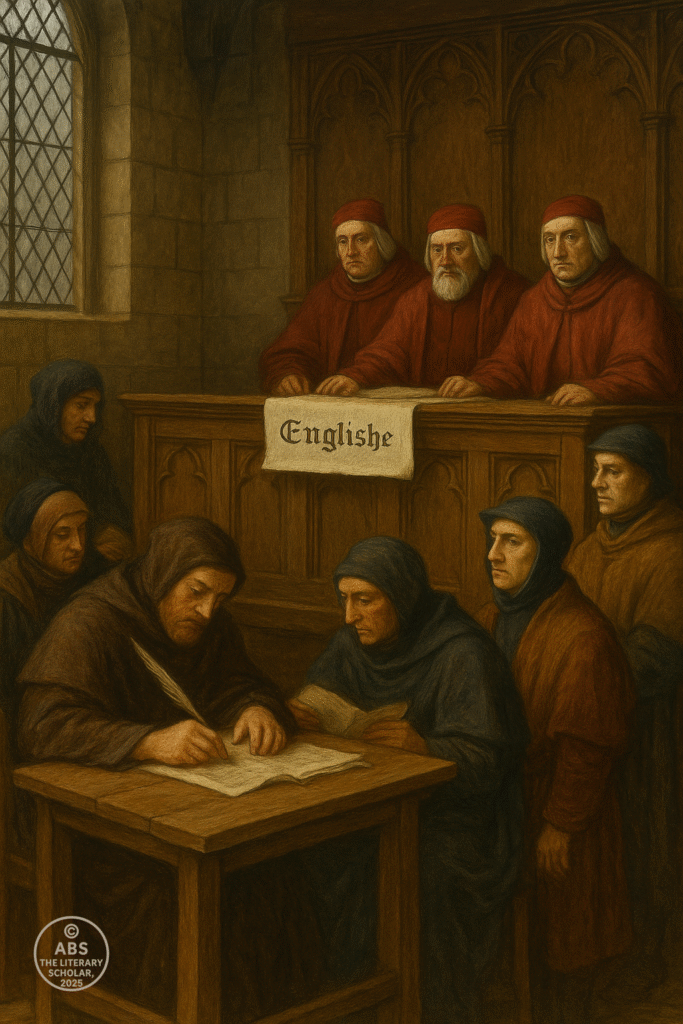
The Hundred Years’ War
The Hundred Years’ War was a series of conflicts fought between the Kingdom of England and the Kingdom of France, along with their respective allies, over a span of about 116 years, from 1337 to 1453. It was a complex and multifaceted conflict that had far-reaching political, economic, and social implications for both countries and for Europe as a whole.
Edwardian Phase (1337-1360): The war began with King Edward III of England asserting his claim to the French crown. The English won several key battles during this phase, including the Battle of Crécy (1346) and the capture of Calais (1347).
Caroline Phase (1369-1389): A period of relative peace was followed by renewed hostilities. During this phase, the French initiated a series of attacks led by Bertrand du Guesclin. The English suffered significant territorial losses.
Lancastrian Phase (1415-1453): This phase includes the famous Battle of Agincourt (1415), where the English under King Henry V achieved a major victory against the French. However, England faced internal struggles, including the Wars of the Roses, which weakened its position.
Edward III: The English king who initiated the war by claiming the French crown through his maternal lineage.
Edward, the Black Prince: Son of Edward III, he gained fame for his military prowess, particularly at the Battle of Poitiers (1356).
Henry V: His victory at Agincourt was a major English success, and he married Catherine of Valois, the daughter of the French king.
Joan of Arc: A French peasant girl who claimed to have divine guidance, she played a pivotal role in the latter stages of the war, rallying French forces and contributing to the French victory.
Effects and Legacy:
National Identity: The war contributed to the development of stronger national identities in both England and France.
Technological Advancements: The war witnessed advancements in military technology, including the use of the longbow, which gave the English a significant advantage in battles.
Economic and Social Impact: The war had significant economic consequences for both countries, leading to heavy taxation and economic strain. It also caused social upheaval and dislocation due to the movement of armies and the devastation of lands.
Political Changes: The war marked the decline of feudalism in favor of more centralized nation-states with professional armies.
Cultural Exchange: The exchange of ideas and culture between England and France influenced literature, art, and architecture.
The Hundred Years’ War concluded with the English losing most of their territorial possessions in France, and the war contributed to the War of the Roses in England. It left a lasting impact on the geopolitical landscape of Europe, shaping the course of history for both countries and contributing to the transformation of medieval society.
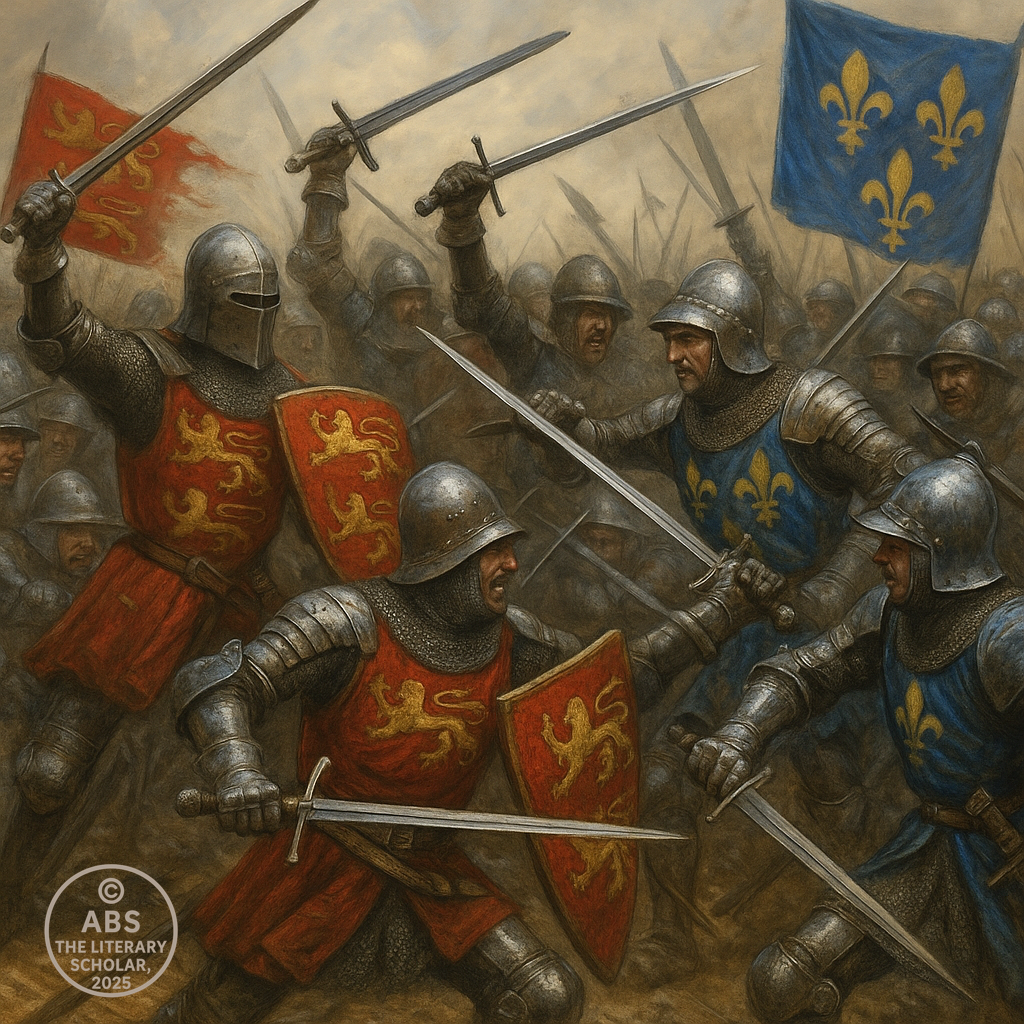
The Peasants’ Revolt
The Peasants’ Revolt, also known as the Great Rising or Wat Tyler’s Rebellion, was a major uprising in England in 1381. It was a pivotal event that marked a turning point in the relationship between the ruling class and the common people, contributing to the decline of the feudal system. Here are more details about the revolt and its implications:
Causes:
Poll Tax: The immediate trigger for the revolt was the imposition of a new poll tax in 1381. This tax, which was the third such tax in four years, placed a heavy burden on the lower classes.
Economic Struggles: The peasantry faced economic challenges, including high taxes, low wages, and rising prices. The Black Death in the mid-14th century had led to a scarcity of labor, giving peasants more bargaining power.
Social Inequities: The feudal system enforced strict social hierarchies and obligations, where peasants were tied to the land and subjected to the authority of lords.
Protests and Uprisings: The revolt began in Essex in May 1381 when a tax collector attempted to collect the poll tax. The tax collector was killed, and the rebellion spread quickly across southeastern England.
Wat Tyler’s Leadership: A prominent leader of the revolt was Wat Tyler, a commoner who rallied the rebels and led them to London. The rebels captured the Tower of London and confronted King Richard II.
Meeting with the King: On June 14, 1381, a meeting took place between Tyler and the young King Richard II. During the meeting, tensions escalated, and Tyler was killed by the Lord Mayor of London.
End of the Revolt: With Tyler’s death, the revolt lost its central leadership. The king made promises to address the rebels’ demands, and many rebels dispersed. The king later reneged on these promises.
Implications:
End of Serfdom: While the revolt itself did not lead to an immediate end of serfdom, it contributed to the decline of the feudal system. Lords became more willing to grant peasants greater freedoms and improved conditions to prevent further uprisings.
Labor Market Changes: The scarcity of labor after the Black Death gave peasants more bargaining power. After the revolt, wages improved, and some peasants were able to move away from the land and work for wages.
Social Awareness: The revolt highlighted the social inequalities and grievances of the lower classes. It showed that peasants were willing to challenge authority and demand change.
Impact on Government: The revolt had an impact on the governance of England. It led to discussions about royal authority and the need for reforms in taxation and governance.
The Peasants’ Revolt was a significant event that illustrated the tensions between the ruling class and the common people during a time of social and economic change. While the immediate results of the revolt were mixed, its long-term effects contributed to shifts in labor relations, the decline of the feudal system, and increased social awareness among the lower classes.

The Black Death
The Black Death, also known as the Bubonic Plague, was one of the most devastating pandemics in human history. It swept across Europe and other parts of the world during the mid-14th century, causing widespread death, social upheaval, and lasting changes to societies. Here are the details of the Black Death
Origins and Transmission
The Black Death is caused by the bacterium Yersinia pestis. It is believed to have originated in Central Asia, spreading through fleas that infested rats. These rats were common on merchant ships, contributing to the rapid spread of the disease along trade routes.
The Black Death occurred in several waves, with the most significant occurring between 1347 and 1351:
First Wave (1347-1351): The disease reached Europe in 1347 when Genoese ships brought infected rats to the port of Messina in Sicily. From there, it spread rapidly across the continent, leaving a trail of death.
Second and Later Waves: Subsequent outbreaks occurred in various parts of Europe over the following decades. While these later waves were less severe, they still caused significant loss of life.
Symptoms and Impact:
The symptoms of the Black Death were gruesome and terrifying:
Bubonic Plague: This form of the disease caused swollen and painful lymph nodes (buboes), fever, chills, and weakness.
Pneumonic Plague: This more virulent form affected the lungs and caused severe respiratory symptoms. It was highly contagious through the air.
Septicemic Plague: The most severe form caused the bacteria to enter the bloodstream, leading to rapid death.
The Black Death had profound social, economic, and cultural consequences:
Massive Mortality: Estimates vary, but the Black Death is believed to have killed between 25 to 50% of Europe’s population. Whole communities were wiped out.
Labor Shortages: The reduced population led to labor shortages. This increased the bargaining power of surviving peasants, eventually contributing to the decline of serfdom and the rise of wages.
Economic Disruption: Trade routes were disrupted, and economies suffered. However, new economic opportunities arose as survivors inherited property and resources.
Cultural and Religious Impact: The massive death toll led to psychological trauma and influenced art, literature, and religious thought. It also led to increased focus on themes of death and the afterlife.
The Black Death left a lasting impact on Europe and the world:
Social Changes: The upheaval caused by the pandemic contributed to the end of the feudal system and the emergence of a more urbanized and modern society.
Medical Advances: The Black Death led to a deeper understanding of disease transmission and prompted the development of public health measures.
Artistic and Literary Expression: The trauma of the Black Death influenced the art and literature of the time, leading to themes of mortality and spirituality.
Long-Term Resilience: Societies adapted to the trauma, showing remarkable resilience and eventually recovering from the devastation.
The Black Death remains a stark reminder of the catastrophic consequences of pandemics and the ways in which they can reshape societies and cultures.
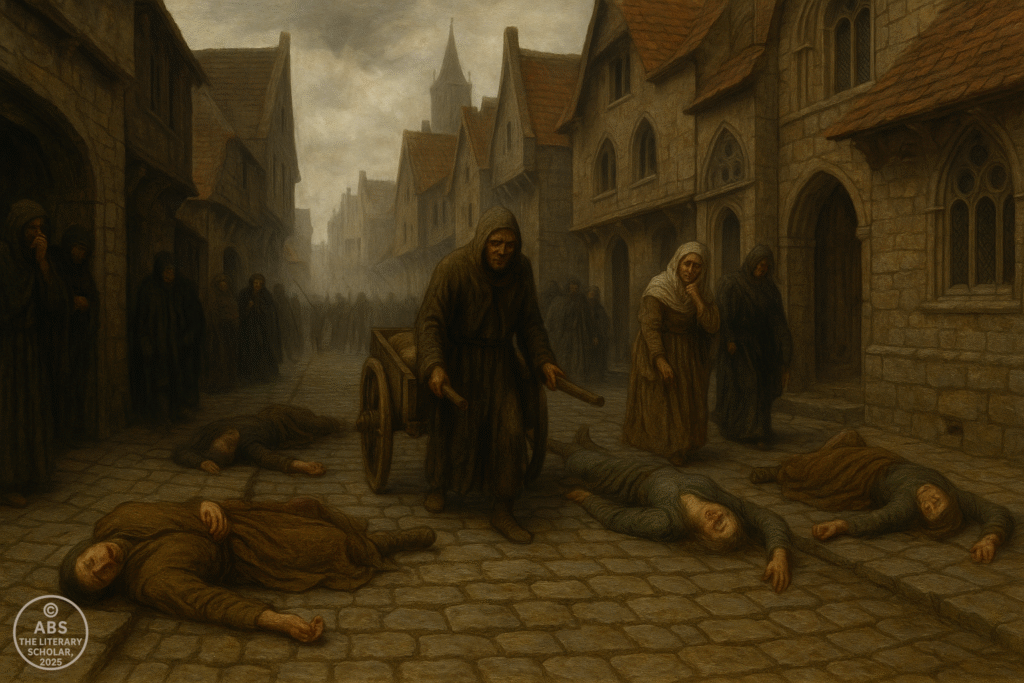
The Lollard Movement
The Lollard Movement was a religious reform movement in medieval England that emerged in the late 14th century. It was founded by John Wycliffe, an English theologian and reformer. The Lollards were followers of Wycliffe’s teachings, which aimed to challenge certain practices and doctrines of the Roman Catholic Church. Here are the details of the founding and key aspects of the Lollard Movement:
Founder: John Wycliffe (c. 1320-1384):
John Wycliffe was a prominent English philosopher, theologian, and professor at the University of Oxford. He was critical of certain aspects of the Church’s practices and advocated for a return to what he believed were the core teachings of Christianity, as found in the Bible.
Teachings and Beliefs:
Bible as Authority: Wycliffe emphasized the authority of the Bible as the ultimate source of religious truth. He believed that all Christians should have access to the Scriptures and should be able to read and interpret them for themselves.
Rejection of Papal Authority: Wycliffe challenged the authority of the Pope and the hierarchy of the Church. He criticized the wealth and corruption within the Church and called for a simpler and more spiritually focused form of Christianity.
Transubstantiation: Wycliffe rejected the doctrine of transubstantiation, which taught that the bread and wine used in the Eucharist became the actual body and blood of Christ. He believed in a symbolic interpretation of the Eucharist.
Clerical Power: Wycliffe criticized the power and privileges of the clergy and questioned the necessity of rituals and sacraments for salvation.
Spread of Lollardy:
The teachings of John Wycliffe gained popularity among various segments of society, including scholars, students, and some members of the gentry. Lollard ideas were often spread through vernacular English writings and translations of the Bible.
Persecution and Impact:
The Lollards faced opposition from both the Church and secular authorities. In 1382, Wycliffe’s teachings were formally condemned by the Church, and his followers faced persecution. However, the movement continued to gain followers, and its ideas had a lasting impact
Translation of the Bible: The Lollards’ emphasis on vernacular translations of the Bible contributed to the development of the English language and increased access to the Scriptures.
Influence on the Reformation: The Lollard Movement laid the groundwork for later religious reform movements, including the Protestant Reformation in the 16th century.
Legacy of Religious Freedom: The Lollards’ emphasis on individual reading and interpretation of the Bible contributed to the broader concept of religious freedom and the right to personal belief.
Continued Influence: While the Lollard Movement declined in the 15th century, its ideas and principles continued to influence later reformers and religious thinkers.
The Lollard Movement represented a significant challenge to the established religious authority of the medieval Church and contributed to the intellectual and religious shifts that characterized the late Middle Ages.
“The world awaited the Dawn of the Renaissance” with bated breath, a time when the shackles of medieval stagnation were gradually giving way to a
burgeoning era of enlightenment. In the words of Dante Alighieri, the Italian poet whose verses echoed through the corridors of time:
“Through me you pass into the city of woe:
Through me you pass into eternal pain:
Through me among the people lost for aye.”
The anticipation hung in the air like the mist of dawn, as artists, thinkers, and scholars yearned to awaken the dormant brilliance of ancient wisdom.
Petrarch’s verses resonated like a promise
“So long as the streams of modern verse
Shall flow renowned to meet the time’s reverse,
So long as under heaven shall shine one sun,
The light of Laura’s eyes, my sweet love, shall run.”
In this dawn, the brushstrokes of da Vinci’s artistry mirrored his boundless imagination, and his words mirrored his insatiable thirst for understanding:
“Learning never exhausts the mind.”
With each stroke of the brush, each turn of phrase, the world was inching toward a transformation. From the depths of obscurity, the Renaissance was to become a beacon of enlightenment, and its light would guide humanity to newfound heights of knowledge, creativity, and expression. As Dante’s verses promised the passage from darkness to light, so did the Renaissance promise to usher in an age where human potential would shine with unparalleled brilliance.
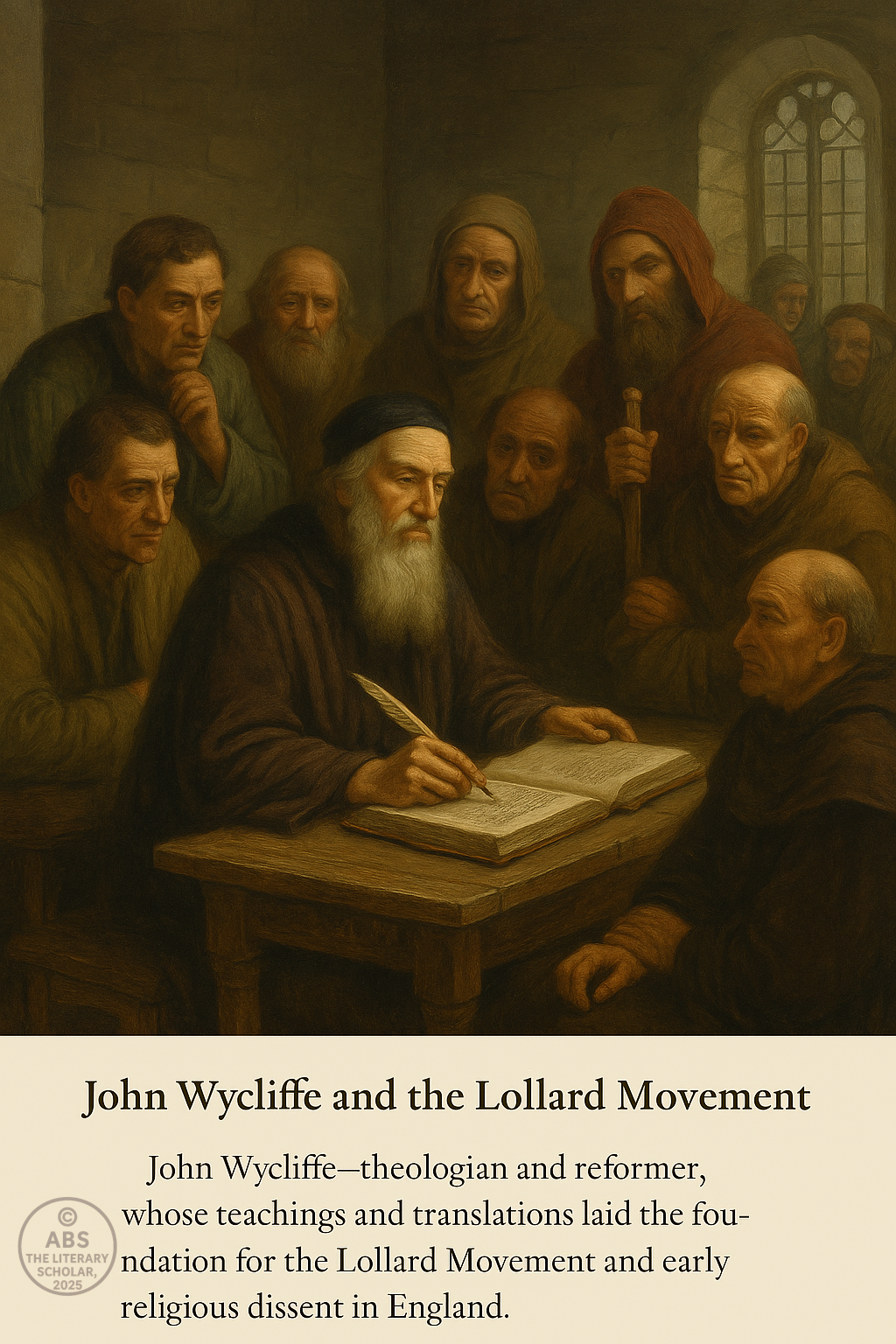
The Wars of the Roses
The Wars of the Roses were a series of civil wars and power struggles that took place in England during the 15th century, specifically between 1455 and 1487. These conflicts were primarily fought between two rival branches of the royal House of Plantagenet: the House of Lancaster, symbolized by a red rose, and the House of York, symbolized by a white rose. Hence, the term “Wars of the Roses.”
Here are some key points about the Wars of the Roses:
Background: The Wars of the Roses were rooted in a complex web of political, dynastic, and economic factors. They were partly a result of the Hundred Years’ War with France, which had drained England’s resources and prestige.
Rivalry between Lancaster and York: The conflict began when Richard, Duke of York, challenged King Henry VI’s Lancastrian rule. This rivalry escalated into open warfare. Battles were fought at various locations across England.
Notable Battles: Some of the most significant battles included the Battle of St. Albans (1455), the Battle of Towton (1461), and the Battle of Bosworth Field (1485). The Battle of Bosworth Field is particularly famous because it marked the end of the Wars of the Roses and the beginning of the Tudor dynasty.
Tudor Victory: Henry Tudor, a Lancastrian claimant, defeated King Richard III, a Yorkist, at the Battle of Bosworth Field in 1485. Henry Tudor became King Henry VII and married Elizabeth of York, symbolically uniting the two warring houses.
End of the Conflict: The marriage of Henry VII and Elizabeth of York is considered the symbolic end of the Wars of the Roses, as it effectively united the claims of both houses. Henry VII established the Tudor dynasty, which ruled England until the early 17th century.
Legacy: The Wars of the Roses had a profound impact on English history. They weakened the power of the nobility and contributed to the centralization of authority in the monarchy. The conflict also set the stage for the Tudor period, which included the reigns of Henry VIII and Elizabeth I.
Shakespeare’s Plays: The Wars of the Roses, particularly the events leading up to them, served as the backdrop for several of William Shakespeare’s plays, including “Henry VI, Part 1,” “Henry VI, Part 2,” and “Richard III.”
Symbolism: The red and white roses became enduring symbols of the two houses and the conflict itself, leading to the term “Wars of the Roses.”
The Wars of the Roses were a turbulent and pivotal period in English history, with far-reaching consequences for the monarchy, the nobility, and the nation as a whole. They ultimately shaped the course of English history in the late medieval and early modern periods.
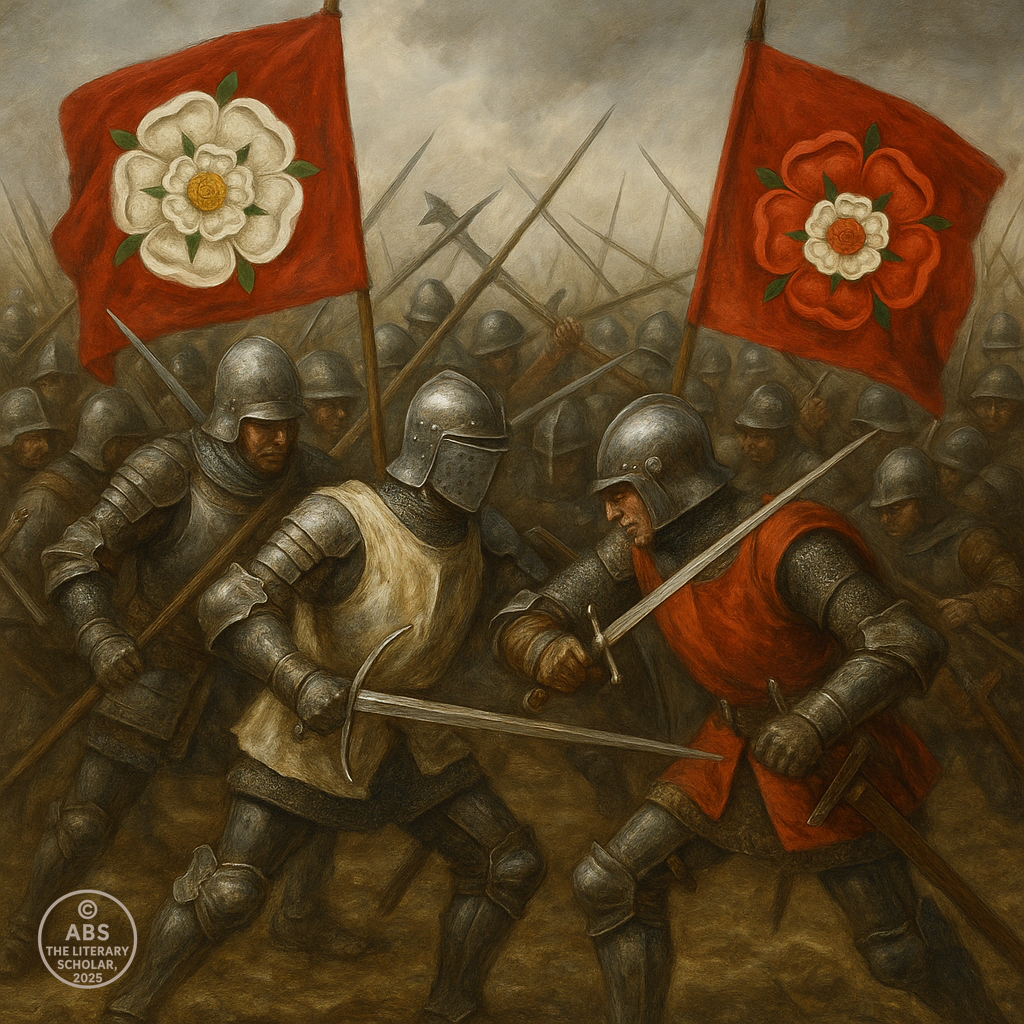
The closing centuries of the Middle Ages were years of extraordinary trial and transformation. War, plague, and rebellion tested the endurance of the English people, while reformist voices began to question long-held certainties. Yet out of this turbulence emerged a new national identity, a vernacular literature, and a language increasingly confident in its expressive power.
As we leave this final chapter of the Middle English period, we stand poised on the threshold of the Renaissance — an age that would inherit the lessons of these turbulent years and carry English letters into new realms of intellectual and artistic achievement.
From the Professor’s Desk
ABS, The Literary Professor
From The Professor's Desk
Share this post / Spread the witty word / Let the echo wander / Bookmark the brilliance
